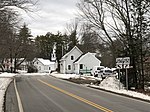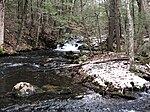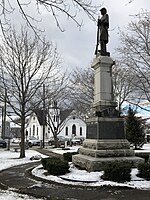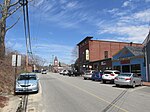Pawtuckaway Lake
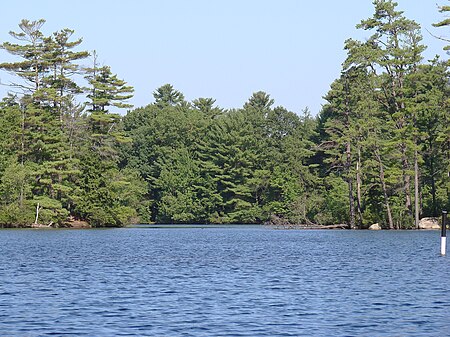
Pawtuckaway Lake (official name Pawtuckaway Pond) is a 784-acre (3.17 km2) reservoir in Rockingham County in southeastern New Hampshire, United States, in the town of Nottingham. The lake is located in the Piscataqua River drainage basin. The lake presently has two dams and three dikes. The dam on the southern end of the lake, Dolloff Dam, feeds the Pawtuckaway River, which flows southeast to the Lamprey River in the western part of the town of Epping. The dam at the north end of the lake, Drown's Dam, releases water to the Bean River, leading to the North River and ultimately the Lamprey River in the northern part of Epping. Approximately half of the lake's shoreline consists of private homes with a mixture of seasonal and year-round residents. Most of the western side of Pawtuckaway Lake is occupied by Pawtuckaway State Park, a popular camping, swimming, boating, hiking, bouldering, and orienteering destination. Canoe orienteering events are held on the lake.
Excerpt from the Wikipedia article Pawtuckaway Lake (License: CC BY-SA 3.0, Authors, Images).Pawtuckaway Lake
Barderry Lane,
Geographical coordinates (GPS) Address Nearby Places Show on map
Geographical coordinates (GPS)
| Latitude | Longitude |
|---|---|
| N 43.088888888889 ° | E -71.138611111111 ° |
Address
Barderry Lane
Barderry Lane
03290
New Hampshire, United States
Open on Google Maps

